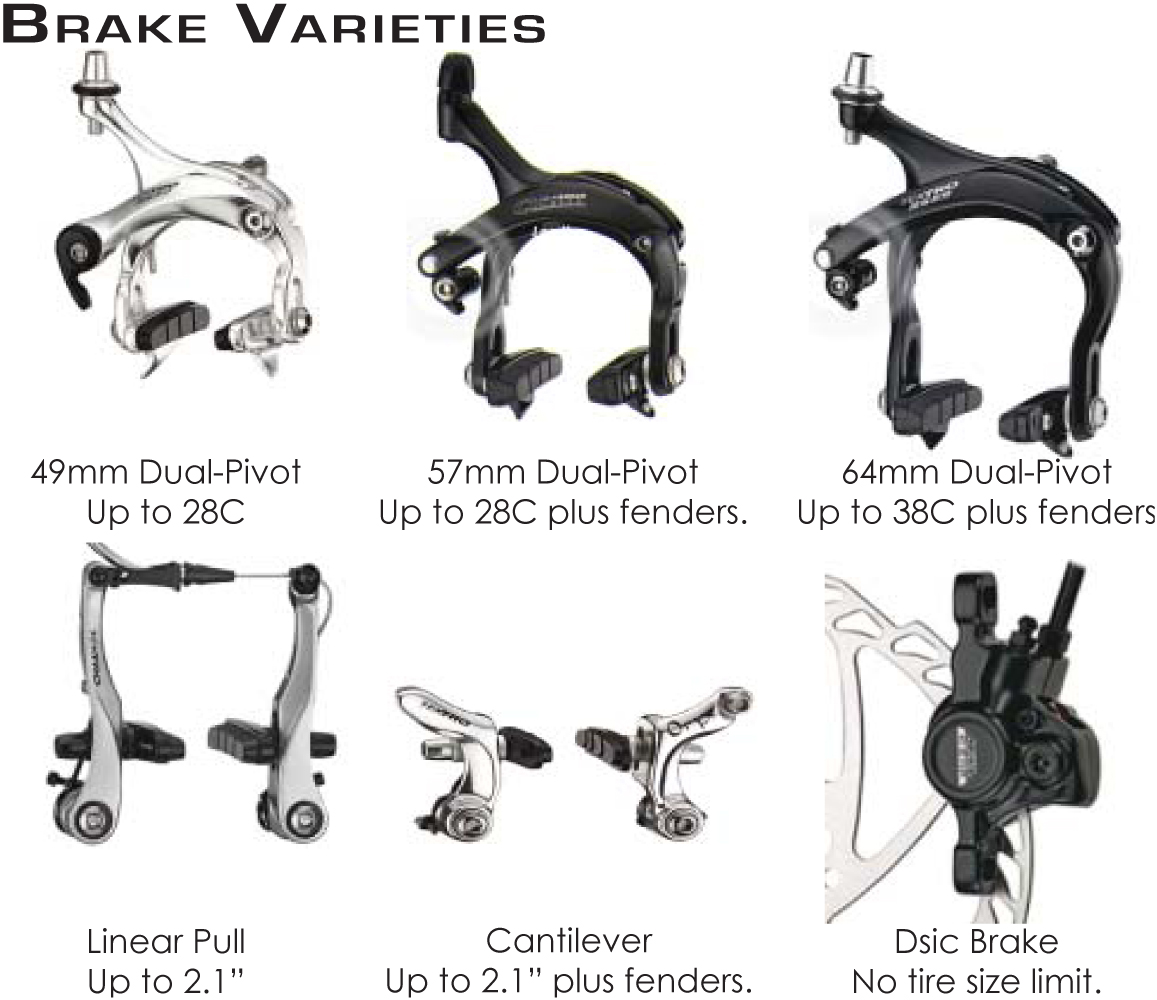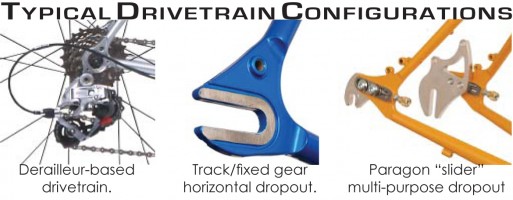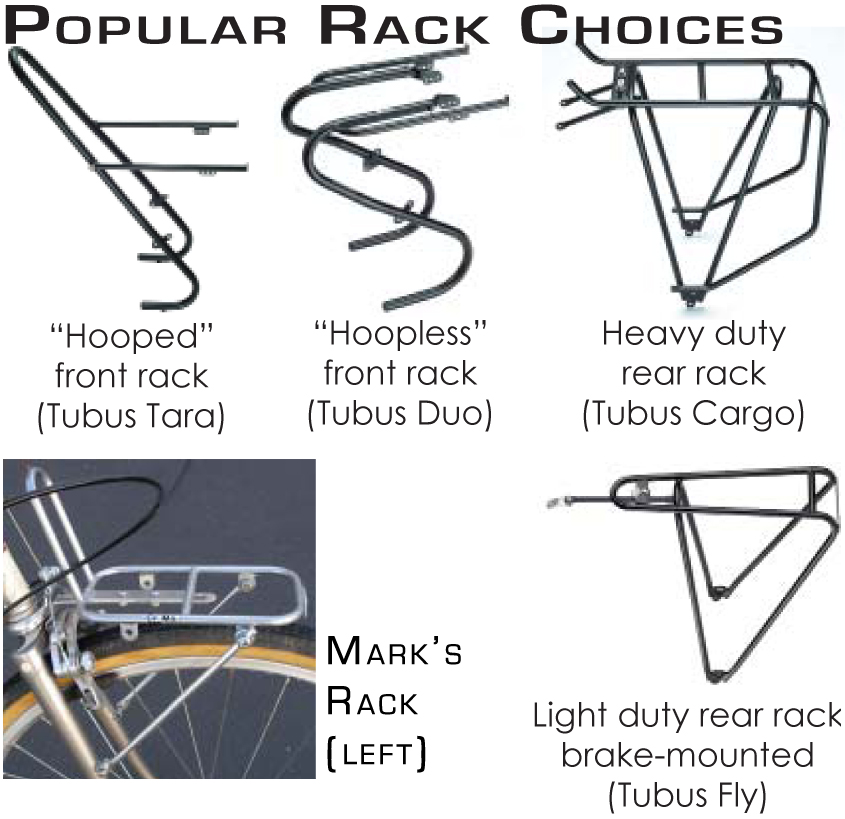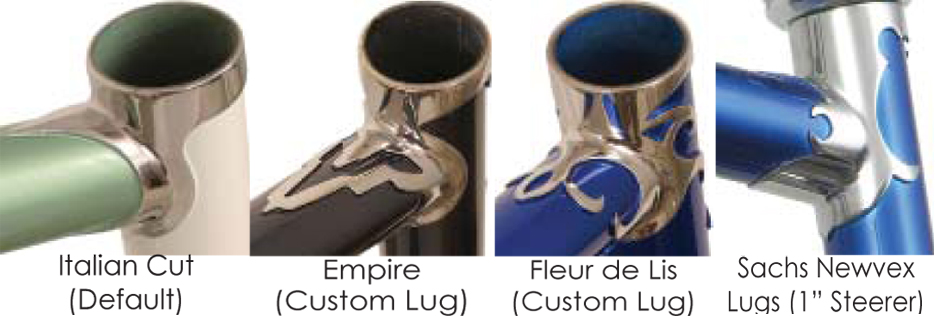Function
“Function” refers to what your Waterford must do to perform properly. At first, the answer sounds simple as in, “I want a road bike.” No longer must you limit yourself to the offerings on the sales floor.
The first place to start is to determine how the bike will be used? Racing? Club rides? Credit card touring? Trails? This is the best time to clarify how you want to use your new Waterford. Then we can develop a design that anticipates your use, component selection, and other attributes.
How will you use your bike? In a few words, please summarize how you will use your bike. Then allocate your percentage of use to different kinds of riding. This helps us understand your “big picture” vision.
Wheels: Most road bikes use 700c wheels unless otherwise specified. Proper fit and safety may dictate an alternative size. When frames are required to be small, 650c or 26” wheels are typically used. These smaller wheels offer better stability and acceleration for some riders. Keep in mind that gearing should be adjusted to compensate for smaller wheels.
Tires: List the maximum tire size (width) you would like to use on your new bike. This affects frame construction, braking system choices, fit, tube selection, and a number of other decisions about your bike’s design.
The choice of shifting system can determine your handlebar choices. Shown at the right is an example of the Rohloff hub shifter, which typically mounts to flat or tourist bars. When using the Rohloff shifter with drop bars it can only mount to the lowest part of the bars.
Fenders: We add eyelets and other mounts for fenders. Like front racks, fender mounts are not fully standardized. Upcharges may apply when special fenders from Honjo, Velo Orange, and other suppliers are specified.
Handlebars: Your handlebar choice dramatically affects how you fit your bike. Properly located drop bars remain the most comfortable configuration for distance riding. Flat and tourist bars shorten the reach and offer excellent short distance riding comfort, but the lack of hand positions makes them less desirable for most rides over 20 miles. Mustache bars offer multiple positions but require extended reach.
Pedals: Your choice of pedals affects the required amount of toe clearance we calculate into the frame design. Clipless pedals do not require as much clearance as toe clips. Platform pedals require the most room since there is a tendency to push the ball of the foot well ahead of the pedal spindle.
Construction
This section addresses how we will construct your frame and fork. Our clients choose Waterford because of our proven virtuosity in frame construction. We offer three categories construction:
33-Series: Ideal for competition use featuring TIG-welded True Temper S3 and Reynolds 953 tubing. It is designed for riders looking for quick acceleration and light weight.
22-Series: Our lug designs have achieved a world-class reputation for quality and workmanship.
14-Series: TIG-welded OS2 construction means versatility and excellent performance in an economical package.
22-Series Options
Waterford offers a wide range of lug options, starting with four popular lug profiles.
Italian Cut: These clean, minimalist lugs pay tribute to the classic Cinelli bikes of the 70’s. It’s available in 1” and 1 1/8” steerer configurations and is included in the base 22-series charge (as long as the design stays within lug angle constraints).
Special edition lugs: Waterford offers special edition lugsets, custom built for each individual frame. Custom built lugs eliminate one of the major constraints in lug designs – restrictions on tube angles. Additional charges apply.
Empire: (Art Deco) Edgy and sharp, this style takes you back to a time when industrial design first hit its stride. Available in 1 1/8” steerer only. Constructed of stainless steel, we build these lugs to match each individual’s frame geometry.
Fleur de Lis: Feast on the delicious curves and windows of this design. Available in 1 1/8” steerer only. Constructed of stainless steel, we build these lugs to match each individual’s frame geometry.
Newvex: Builder Richard Sachs patterned these lugs after the classic French Nervex lugs which dominated the high-end bike world from the mid-1950’s to the mid-1970’s. Available in 1” only.
Each of these profiles is available in a polished stainless as well as painted finish.
22-Series Stainless: You can upgrade from Waterford’s extensive palette of custom heat treated air-hardening tubes to high performance heat treated stainless steel from Reynolds and KVA. Additional charges apply.





